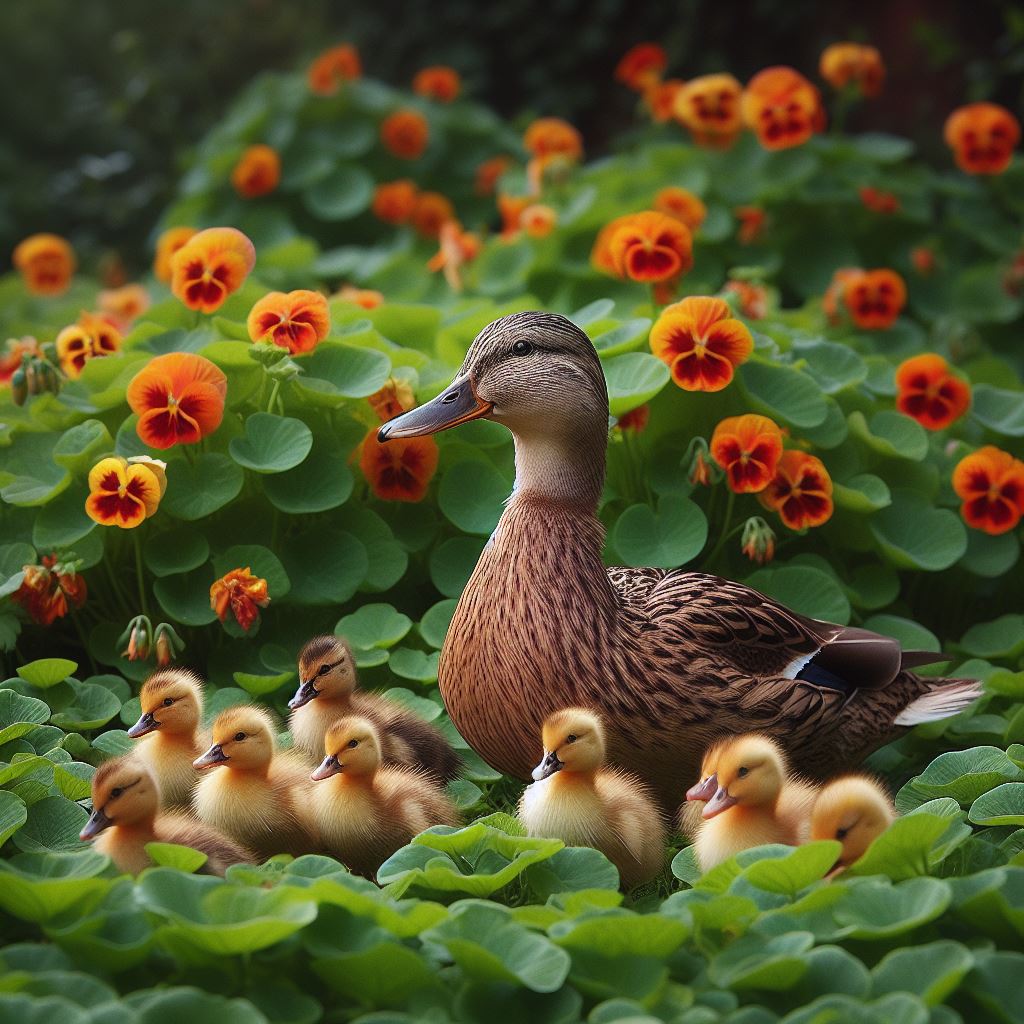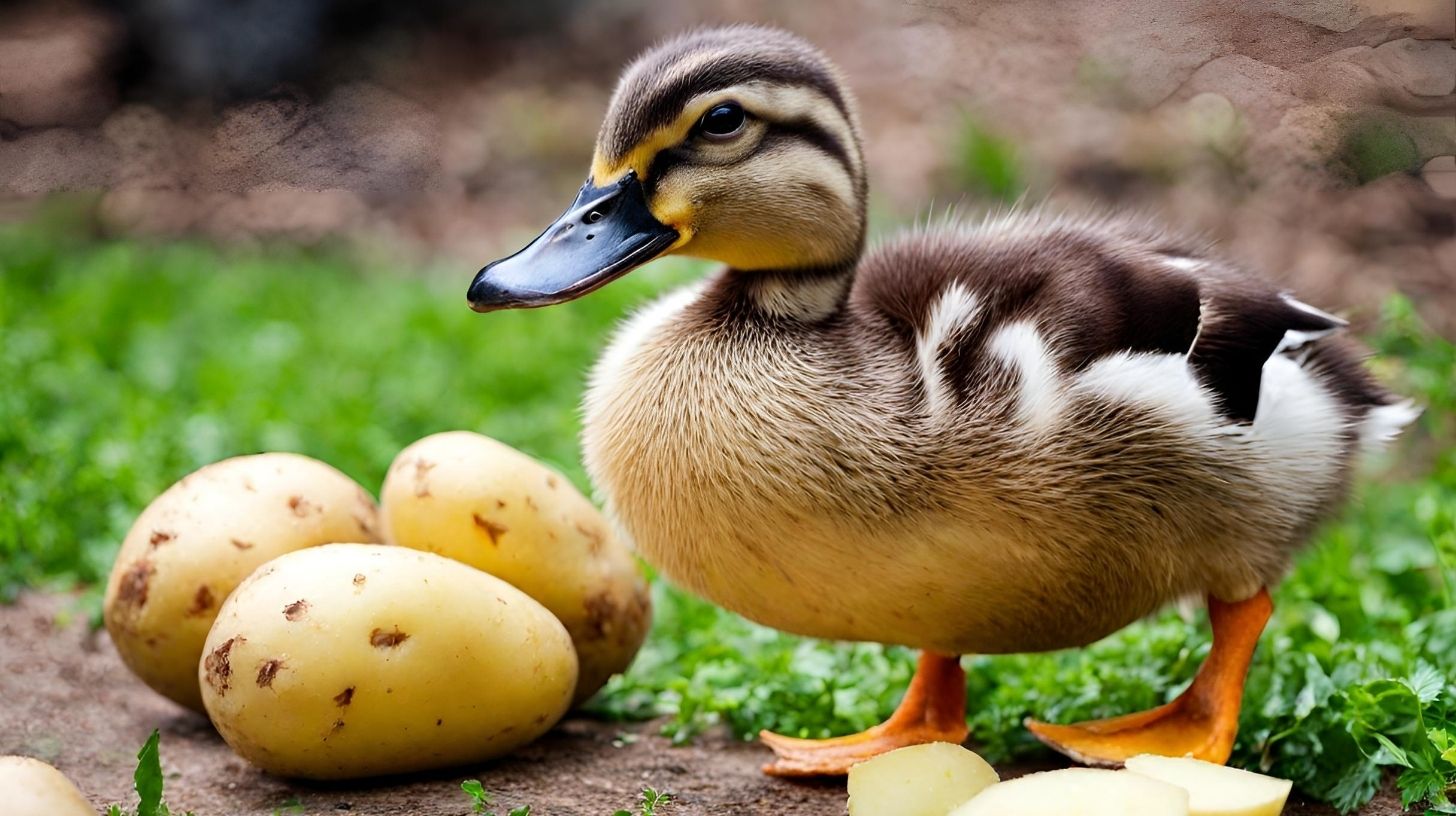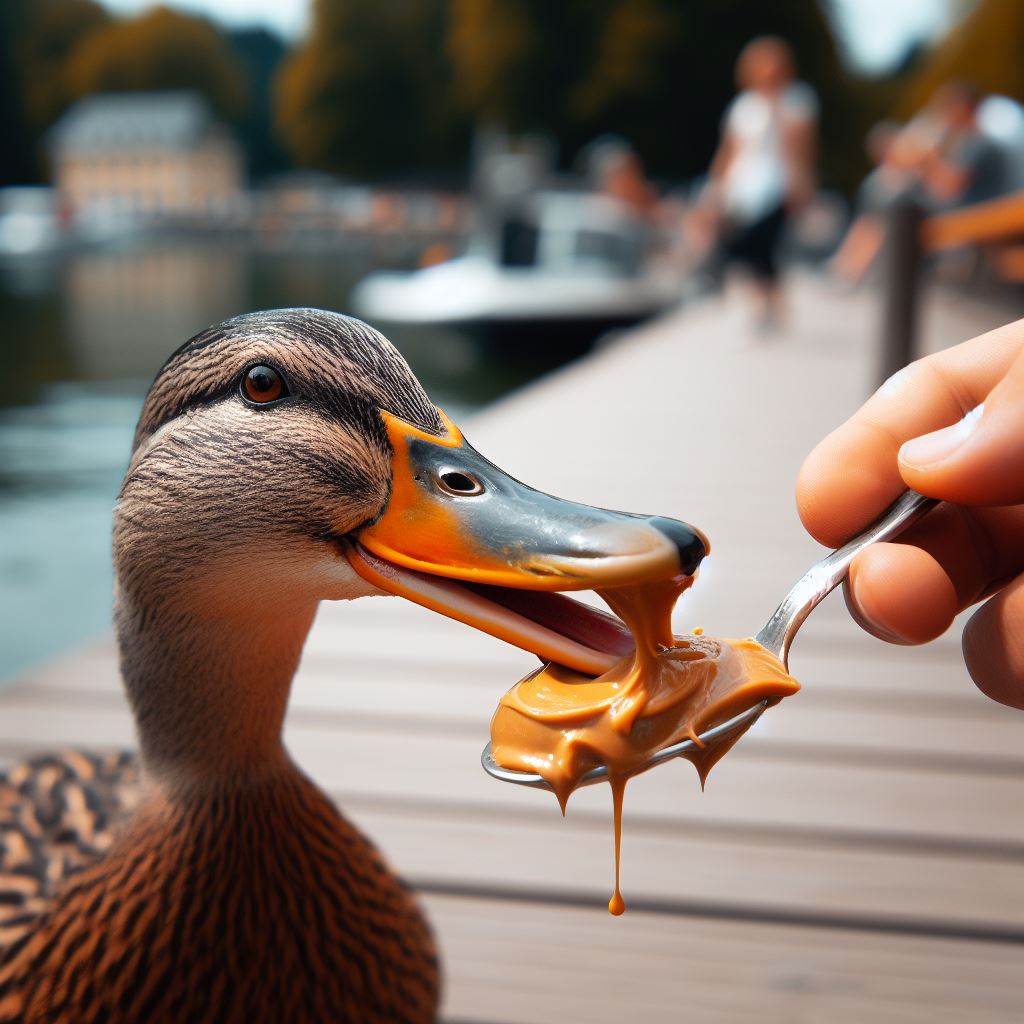Will Ducks Fly Away? Understanding Duck Behavior

Table of content:
- Do Domestic Ducks Fly Away?
- Can I Clip My Duck’s Wings to Stop It From Flying Away?
- How Can I Train My Duck Not to Fly Away?
- Will Ducks Fly Back Home if They Fly Away?
- How High Can Ducks Fly if They Fly Away?
- What Age Do Ducks Start Flying Away from Home?
- Do Ducks Remember Their Home After Flying Away?
- Conclusion
For anyone considering keeping domestic ducks, concerns about their ability to fly away are understandable. Seeing a duck take flight can be alarming if you fear they won’t come back. However, most duck breeds don’t have the same powerful flight capabilities as their wild relatives.
While it’s true that some domestic ducks can and will fly away given the opportunity, there are steps you can take to minimize this risk. Many duck owners successfully keep their ducks confined without major issues by using secure enclosures, supervision when out of their pen, and other precautions.
Below we’ll explore some of the top questions prospective duck owners have about flight and solutions for keeping your ducks close to home. With the right setup and training, ducks can become reliable and beloved pets that bring joy, entertainment and eggs to the family homestead.
Do Domestic Ducks Fly Away?
The first question many new duck owners ask is whether domestic breeds even fly. Unlike chickens that can only manage short flights, ducks are naturally stronger flyers. However, through years of domestication, some breeds have lost their strong flight capabilities.
Ducks such as the common Pekin duck, bred specifically for meat, are very heavy-bodied and unable to fly significant distances. You may see them flap their wings and lift themselves over a fence, but they can’t stay airborne for long.
Other domestic ducks like Welsh Harlequins, Anconas, and Calls retain more of their wild ancestors’ flying genetics. If given an open yard or pond, they will take to the air and can disappear over the treetops.
So while the answer depends on the specific breed, domestic ducks generally fall into three categories regarding flight:
- Heavy, meat breeds that can’t sustain flight (Pekins, Rouens, Muscovies)
- Moderate flyers that may lift off but stay close (Campbells, Welsh Harlequins)
- Strong flyers capable of migrating long distances (Calls, Mallards, Wild Ducks)
Knowing the flying tendencies of your breed is essential in planning their enclosure and supervision requirements. Heavier ducks may only need a 4-foot fence, while excellent flyers need clipped wings or a fully enclosed run.
Can I Clip My Duck’s Wings to Stop It From Flying Away?
For ducks with strong flying capabilities, many owners choose to clip their wings to prevent escape. This involves carefully trimming the primary flight feathers on one wing, leaving the duck unable to fly more than a few feet.
Clipping a duck’s wings is painless if done correctly, similar to trimming a dog’s nails. It does not harm them long term or affect their quality of life. Their feathers will regrow and need to be trimmed again after molting.
The procedure for clipping duck wings is:
- Wait until feathers are fully grown – don’t trim baby duck wings or during a molt when they are growing new feathers.
- Round up your helper – Have someone gently hold the duck still during the process.
- Locate the primary flight feathers on the outer wing. These are the long, stiff feathers at the bend of the wing.
- Trim these feathers on one wing only around 2 inches from the end, cutting diagonally with sharp scissors.
- Monitor the duck’s flight abilities – Some determined ducks can still fly adequately with partially clipped wings. You may need to trim more to fully hinder flight.
With properly clipped wings, your ducks can still glide gently down from perches, walk, swim and go about their daily activities. But they will be grounded from flying up and over fences and becoming lost.
Clipping wings does require regularly checking and trimming feathers as they regrow. And some owners prefer not to trim wings for ethical reasons. So for ducks that are extreme escape risks, total enclosure may still be the best approach.
How Can I Train My Duck Not to Fly Away?
In addition to clipping, you can use training techniques to discourage ducks from wandering. This takes more time and effort than wing clipping but allows your ducks to keep their full flight capabilities.
Here are some tips for training ducks not to fly too far afield:
- Meet their needs at home – Ducks that roam are often looking for resources. Provide swimming water, hiding spots, food, and flock mates in their home environment.
- Supervise outdoor time – When your ducks are free-ranging, keep a close eye to ensure they don’t wander too far. Call them back if they start flying off.
- Discourage landing in off-limit areas – Use motion-activated sprinklers or other aversives to keep ducks from landing on your roof, trees, or neighbor’s yard.
- Give treats for coming when called – Use a whistle or call paired with tasty snacks to encourage your ducks back to their enclosure.
- Practice recall inside a large penned area – Teach them recall skills in a safe space before giving full free-range access.
- Use flight panels on any open areas of their run – Let them have open sky access but inhibit actual flying departure.
With time and consistency, intelligent ducks can learn to enjoy exploration while still returning home reliably each night. But supervision is still key, as their natural instincts may override training at times.
Will Ducks Fly Back Home if They Fly Away?
If your duck does manage to slip away, you may wonder if it will find its way home again. Unfortunately, ducks have little natural homing instinct compared to species like pigeons.
However, ducks are social animals who form bonds with their flock mates. If they fly off on their own for a short adventure, they often return to look for their friends after a few hours or days.
You can encourage this by:
- Keeping bonded pairs or trios rather than single ducks – they will miss each other.
- Housing ducks with poultry species like chickens that won’t wander as far.
- Let your ducks free range regularly to become attached to your home environment.
The key is preventing lengthy absences during which the ducks form bonds in new locations. Try to quickly retrieve escaped ducks before they become settled elsewhere. Search nearby water sources where they may have landed safely.
While ducks do not intentionally “run away from home,” their exploratory nature can lead to lengthy trips. Monitoring flight risk, clipping wings if needed, and training recall are the best ways to avoid losing your feathered friends for good.
How High Can Ducks Fly if They Fly Away?
When envisioning an escaping duck, you might picture it quacking just over the treetops within sight. But many wild ducks actually migrate at altitudes of several thousand feet during their seasonal journeys.
Domestic ducks retain some of this high flying capability as well. Duck breeds like Calls and Mallards are agile fliers that can rapidly reach heights of 500 feet or greater.
From that altitude, they can travel a mile or more in distance fairly quickly. A light-bodied duck may be able to coast up to 5 miles before needing to stop and rest.
So while ducks don’t migrate the hundreds or thousands of miles of their wild cousins, they can still become nearly impossible to locate if they fly away from home and don’t return.
This is why completely enclosed housing is recommended for very flight-prone breeds like Calls and Mallards. Even ducks that don’t fly extensively will use their wings to get into mischief and unsafe situations if left unsupervised.
Know your duck breed’s typical flight altitude and distance capabilities when planning their housing and containment solutions.
What Age Do Ducks Start Flying Away from Home?
Baby ducklings under 3-4 weeks old are unable to fly more than a foot or two up to a perch. But at what age do they gain enough wing power to potentially fly away?
Most ducks start experimenting with short flights around 7-10 weeks old. Breeds with high flying drive may begin beating their wings and lifting off while still fairly young.
But just because a duckling starts flapping and hovering doesn’t mean it can successfully migrate far distances. Sustained, long-range flight requires experienced muscle conditioning and navigational skills.
Full flying capability sufficient to escape their home turf develops between 12-20 weeks of age for most ducks. This coincides with the juvenile flocking instinct kicking in as they reach sexual maturity.
So it’s essential to have secure housing and/or flight feathers clipped by the time your ducks pass the 3 month mark. Letting them range freely or even going outdoors unsupervised should wait until their flight skills are restricted.
Some tips for this adolescent phase:
- Closely supervise outdoor time or keep confined until clipped
- Distract with abundant food, water, toys, and flock mates
- Monitor for signs of restlessness or attempts to wander
- Consult your breed profile to know when to expect peak flight development
- Clip primary feathers at 8-14 weeks old depending on breed
The adolescent period will pass quickly if you take proper precautions during their peak flight training age.
Do Ducks Remember Their Home After Flying Away?
Say one of your ducks did escape and was gone for days or weeks before being found. If returned, will it remember your home and be content staying there?
Ducks are intelligent birds with decent memories, especially for locations. Both visual landmarks and unique sounds (like a farm’s particular machinery) get encoded in their brains.
Ducks recognize and get attached to their home turf which offers shelter and food security. So those raised from ducklings and kept for over a year are likely to recall your property even after a long absence.
However, ducks are also highly adaptable as prey animals. If they form new bonds and settle into a different location, their homing instinct may get overridden.
Tips for reintegrating an escaped duck:
- Confine it for several weeks so it can readjust to its home environment.
- Slowly reintroduce it to any same-species flockmates if separated for an extended time.
- Entice it to stay with abundant food, water sources and hiding spots.
- Prevent further escapes by addressing how it got out in the first place.
While not guaranteed, most ducks will remember significant portions of their home range and flock after returning from a journey. With care not to scare them, escaped ducks can usually transition back into your farm lifestyle successfully.
Conclusion
Ducks offer wonderful benefits as well as unique challenges for homestead owners. Their natural flying skills mean owners must take appropriate precautions through housing design and training.
Knowing your duck breed’s typical flight capabilities is the first step. Heavy bodied meat ducks require only simple barriers, while agile fliers like Calls need either wing clipping or fully enclosed runs.
Training techniques like treat rewards and flight panels can also encourage ducks to stay close to home. And understanding adolescent duck behavior helps prevent wanderlust before it starts.
While allowing your ducks supervised free range time is ideal for welfare, some individual ducks can never be trusted not to fly too far. In those cases, permanent wing clipping may be needed.
With the right housing setup for their abilities, most ducks can become remarkably faithful pets. Getting to know your ducks’ individual personalities goes a long way in preventing frustrating escapes.
Welcome. I’m Adreena Shanum, the proud owner of this website, and I am incredibly passionate about animals, especially poultry. I founded adreenapets.com as a labor of love, stemming from my desire to share my knowledge and experiences with poultry enthusiasts worldwide.




